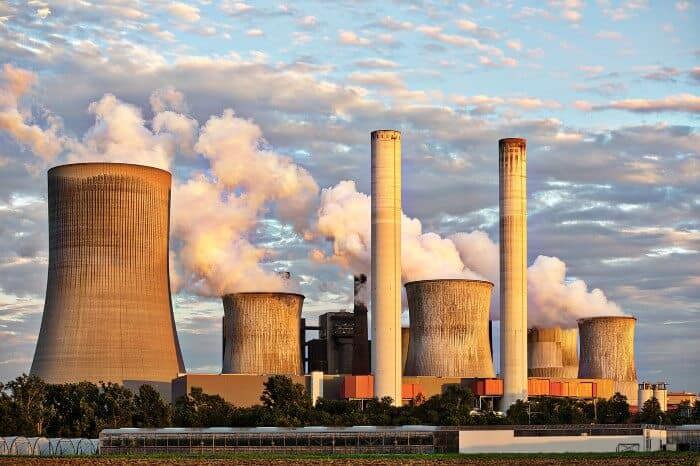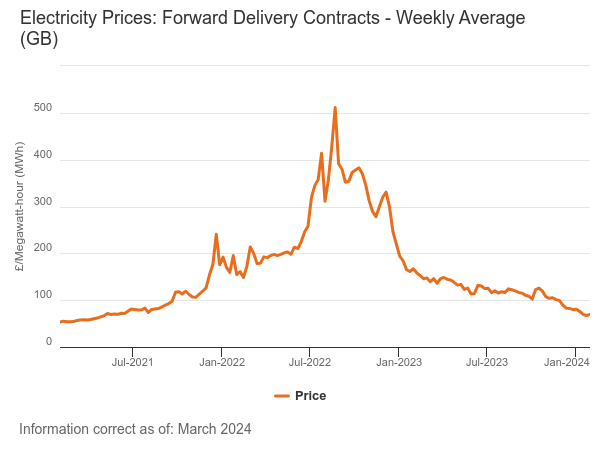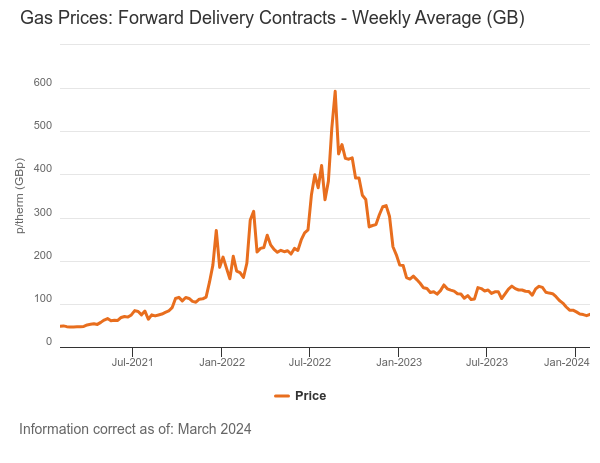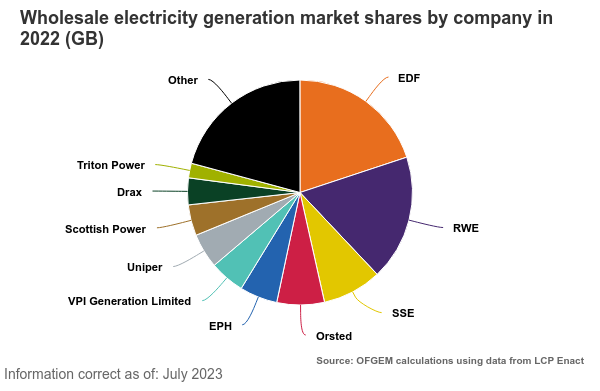Wholesale Gas Prices Complete Guide
To switch or not to switch. Many UK businesses have been closely monitoring the wholesale gas prices looking for the best time to lock in the cheapest energy prices possible. The truth is that nobody knows when prices will go up or down. The best we can do is understand what impacts them, how the wholesale market impacts energy bills, and figure out when to switch.

Wholesale Gas Prices 2024
The wholesale gas price in 2024 is 2.58 p/kWh and 5.87 p/kWh for electricity. As you can see from the charts below this is a significant decrease from highs seen just a few years ago.


The prices above are based on these charts and have been converted to p/kWh. Source: Ofgem - Wholesale market indicators.
What Is Wholesale Energy?
Wholesale energy is the term used to describe the bulk purchase pricing structure in that suppliers purchase electricity and gas from the producers.
The wholesale energy prices are lower than the price you will see on your energy bills as this price is before any extra charges are added including retailer profits, distribution costs, taxes and operating costs.
How Have Wholesale Gas Prices Changed Over Time?
Over the last couple of years, we have lived through various world events that have impacted UK wholesale gas prices to the point where we’ve witnessed all-time highs. Starting in late 2021, we witnessed surging prices due to Russia’s invasion of Ukraine compounded by a colder winter that saw a surge in demand.
The lack of supply from Russia to Europe during this period caused many issues, ultimately leading to very high prices.
Nobody can predict if similar events can happen, making it difficult, if not impossible to predict the future wholesale energy prices.
How Does The Wholesale Energy Market Work?
The wholesale energy markets allow suppliers to purchase gas and electricity in bulk from the producers. However, some larger consumption organisation can purchase from wholesalers directly through an energy procurement process. The suppliers we’re all familiar with handle all the billing, customer service and switching with their costs added onto the price they purchased the energy for.
The price of wholesale energy makes up 42% of the costs on your monthly bills. Here is how the rest of your bill is broken down:

Source: Ofgem.
What Is The UK's Fuel Mix?
Coal - 3.4%
Natural Gas - 39.3%
Nuclear - 13.9%
Renewables - 40.8%
Other Fuels - 2.6%
|
Generator |
Market Share % |
|---|---|
|
18.29% |
|
|
16.57% |
|
|
7.83% |
|
|
6.26% |
|
|
4.98% |
|
|
4.64% |
|
|
4.58% |
|
|
4.07% |
|
|
3.54% |
|
|
1.93% |
|
|
Other |
19.1% |
Who Controls The UK Energy Industry?
There's no one single 'controller' of the UK energy industry. It is made up of and influenced by many types of companies, networks and the government.
The UK gas and electricity market involves:
- Generators/transporters
- Transmission network
- Local distribution network
- Energy suppliers
Each of these roles tends to be owned and operated as a separate entity. However, some energy companies also own one or more distribution networks and one or more generation power plants.
What is the Generators/Transporter’s role in the energy market?
An energy generator is responsible for generating the electricity required by the energy suppliers and meeting the demands of the National Grid.
The generators tend to export their electricity straight to the National Grid’s transmission network. However, if the generator is producing lower volumes, it may be connected to the local distribution network rather than to the National Grid. This applies to those generating less than 150MW in England and Wales and 10MW in Scotland.
The gas transporter’s role is to transport the gas to the National Transmission Network operated by the National Grid. Unlike electricity, gas can be more easily stored and released into the transmission network when needed.
Both gas and electricity suppliers must have licences from Ofgem to operate in the UK. They will have agreements in place with the National Grid to supply energy when needed, as well as sell the gas and electricity to the energy supplier.
What is the Transmission Network’s role in energy?
There are two types of transmission networks in the UK- one for gas and one for electricity.
The gas transmission network is called the National Transmission Network and covers England, Wales, and Scotland. It is owned by the National Grid. The gas is transported at high pressure through the National Transmission Network before being transported to the local distribution networks at either medium or low pressure.
The electricity transmission network in Great Britain is owned by three companies.
The National Grid owns and operates the transmission network in England and Wales. The Scottish transmission network is owned by Scottish Power and SSE, but the National Grid operates it.
The electricity is transported in the transmission network at higher voltages for ease of transporting it and to reduce losses. The electricity needs to pass through a transformer on the local distribution network to reduce the voltage of the electricity to a usable level.
The National Grid is responsible for the network of pipes and cables along with other assets on its network, but they are not responsible for the local distribution networks. They are also responsible for ensuring that there is sufficient energy in the transmission networks to feed the demand but also oversee that supply does not outstrip demand. To manage supply, they have multiple arrangements in place to ensure continuity.
The National Grid charges the users of the transmission networks to cover operating costs; this is in turn passed on to the energy consumer.
What is the Distribution Network Operator’s role in the energy?
There are two sets of distribution network operators (or DNOs) in the UK. One manages the gas networks and one the electricity networks.
The gas network in Great Britain is made up of eight regions which are owned and run by five distribution network operators. The distribution network operators are responsible for the repair and maintenance of the pipes that transport gas from the National Transmission Network to the end-user. They are also responsible for new connections to the network and for moving any pipes when needed.
The electricity network in Great Britain consists of eight regions that are owned and operated by six distribution network operators.
The network that the distribution operators manage consists of the cable (overhead and underground), sub-stations, and transformers that run between the National Grid and the end-user.
They are responsible for the maintenance and repair of the network assets and respond to power cuts in their regions. The distribution network operators are also responsible for connecting new properties to the network and any new generators below 150MW in England and Wales and up to 10MW in Scotland.
The cost of the distribution networks is transferred to the energy bill payer through the charges that they place on energy suppliers who use their network to supply their customers.





